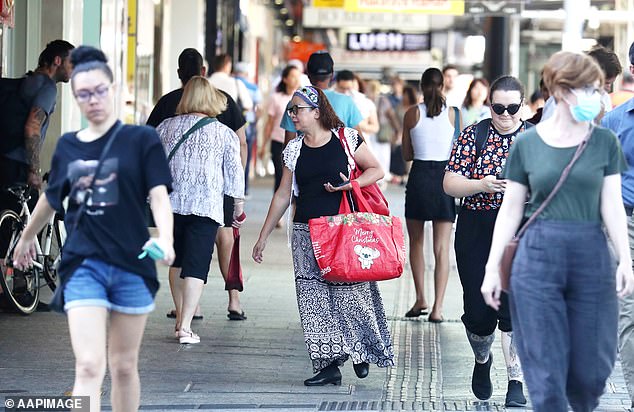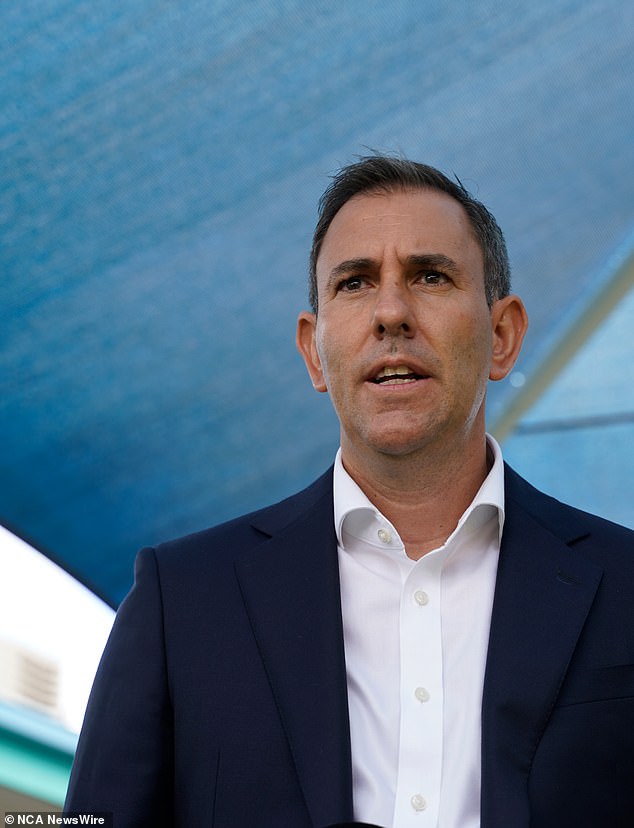Revealed: The age when Aussies will earn the most money in their lifetime
New figures show Australians will see their salaries reach the highest point in their working lives in their late 40s.
But Australians typically remain on low wages well into their 30s.
The insights were revealed on Wednesday in the Ministry of Finance’s Tax Expenditures and Insights Statement.
Those between the ages of 45 and 49 may be dealing with a midlife crisis and gray hairs, but they had the highest average personal income of $88,300 in the 2020-2021 financial year.
The next highest-paid age group, 50 to 54, typically earned $87,500, ahead of the 40 to 44 group at $85,800 at the stage of life when they are more likely to take out a mortgage and raise children.
Australians are more likely to see their salary peak in their late 40s. But Australians typically remain on low salaries well into their 30s (pictured is a stock photo)
Young people aged 18 to 24 had the lowest average taxable income at $36,500, with many working temporary jobs, but this was the largest age group in the working population at 1.86 million young people.
The big pay increase next came for the 25 to 29 age group, who had an average salary of $55,200 at a time when more people were graduating from college.
But Australians generally remain below the median income for all Australian workers into their 30s, tax return data shows.
Workers typically don’t get paid until their mid-30s, while those between the ages of 30 and 34 earn an average income of $65,500.
In 2021, the median income was $62,400, a level that has since risen to $67,600, with this figure accounting for part-time and full-time workers.
Australians have to wait until their late 30s to rise above the average income, with the 35 to 39 age group having an average personal income of $76,200.
This was above the average salary of $67,902 in May 2021, which has since risen to $72,753.
But no age group typically earned more than the median full-time salary of $95,581.
After peaking at $88,300 in the late 1940s, salaries began to decline, to $87,500 for the 50 to 54 group and to $80,700 for the 55 to 59 group.
Baby boomers earned even less, while those between the ages of 60 and 64 earned $69,600 as they neared retirement age.
Those who continued to work after that typically earned $55,000, with this figure referring to the 65 to 69 age group.
Australian Supreme Court judges must retire at age 70.

Those aged 45 to 49 may be dealing with a midlife crisis and gray hairs, but they had the highest average personal income of $88,300 in the 2020-21 financial year (pictured is Brisbane’s Queen Street Mall)

Australians have to wait until their late 30s to be above average, while the 35 to 39 age group has an average personal income of $76,200 (pictured are spectators at Sydney’s Royal Randwick Racecourse)
But those still working in the 70 to 74 age group typically earned $47,500, as older workers worked part-time to pay bills or keep busy.
The group of people over 75, including the first baby boomers and those born during the war, earned an average of $45,700, while 611,000 of them were still in the labor force.
When it came to earnings across ten levels, those in the highest decile earned $237,900, compared to $4,600 for those in the lowest decile when individuals with negative income were excluded.
Those in their late 40s were in the third-highest income decile, from $75,800 to $95,000.
Men had an average taxable income of $79,200 in 2020-2021, compared to $56,500 for women.

Treasurer Jim Chalmers has released a Tax Expenditures and Insights Statement a week after Labor announced it would retain the 37 per cent marginal tax bracket rather than abolish it and keep a 30 per cent bracket for those earning $45,000 to $200,000.

Those under 18 did not appear, as teens are more likely to earn less than the $18,200 tax-free threshold.
Treasurer Jim Chalmers published the Tax Expenditures and Insights Statement a week after Labor announced it would maintain the 37 per cent marginal tax band, rather than abolishing it and keeping a 30 per cent band for those earning $45,000 to $200,000.
Under Labour’s plan, the 45 percent tax threshold will kick in at $190,000 instead of $200,000, as those earning between $18,200 and $45,000 will see their marginal tax rate fall from 19 to 16 percent.
The stage three tax cuts, introduced in 2019 when Scott Morrison was Liberal prime minister, were due to come into effect on July 1 this year.
